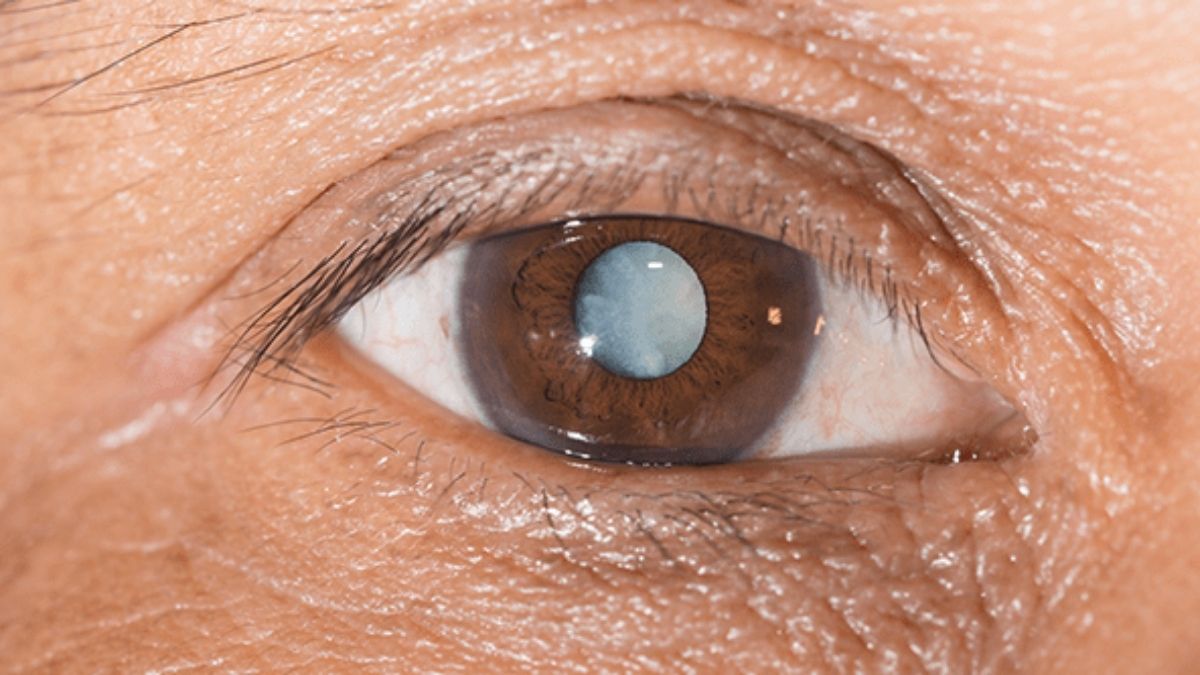HEALTH
Understanding Common Causes and Treatments for Erectile Dysfunction

What is Erectile Dysfunction?
Erectile dysfunction is more prevalent than many people realize, affecting approximately 30 million men in the United States alone. Many affected individuals consider visiting an ED clinic to access professional assessments and explore a range of solutions tailored to their needs. It can lead to decreased quality of life and can be an indicator of other health issues, such as cardiovascular diseases. Diagnosing ED typically involves a combination of physical examinations, patient history, and sometimes blood tests to identify any hormonal imbalances. The disruption of not only the physical aspect of a relationship but also the emotional connections further underlines the significance of understanding ED.
Physical Causes of Erectile Dysfunction
ED can be rooted in several physiological issues. Cardiovascular diseases, diabetes, and hypertension are prominent risk factors, as they impede proper blood flow, which is essential for an erection. Neurological disorders such as multiple sclerosis and Parkinson’s disease can inhibit the nerve signals necessary for arousal. Hormonal imbalances, such as low testosterone, also play a significant role. The American Diabetes Association highlights how diabetes not only affects blood flow but also causes considerable nerve damage over time, increasing the prevalence of ED among diabetic men by up to threefold.
Furthermore, the use of certain medications, such as those prescribed for high blood pressure, depression, and prostate conditions, can contribute to the development of ED. These medications may disrupt the mechanisms that allow for proper blood flow or neural communication needed to achieve and maintain erections. Patients need to discuss all medications they’re taking with their healthcare provider to manage and mitigate these side effects effectively.
Psychological Factors Influencing Erectile Dysfunction
The mind’s role in sexual function should never be underestimated. Mental health conditions such as depression and anxiety often lead to or intensify ED. Stress and fatigue are also significant contributors every day in today’s fast-paced world. The performance anxiety that can accompany these issues often creates a cycle of ongoing erectile problems. Understanding and addressing these psychological factors through counseling or cognitive-behavioral therapy can be incredibly beneficial.
Additionally, relationship issues and lack of communication with a partner can exacerbate psychological factors contributing to ED. Open and honest discussions with a partner can alleviate concerns and help reduce anxiety, fostering a supportive environment where treatment can be more effective. Professional therapy can provide coping strategies to manage stress and anxiety, further supporting erectile health.
Lifestyle Choices and ED
Everyday choices significantly affect erectile health. Smoking, excessive alcohol intake, and illicit drug use impair blood vessels and circulation, contributing to the likelihood of ED. Additionally, obesity and a sedentary lifestyle can exacerbate these effects by increasing the risk of vascular diseases. According to the Centers for Disease Control and Prevention, adopting a healthier lifestyle—by quitting smoking, limiting alcohol, and engaging in regular physical activity—can lead to significant improvements in both erectile and cardiovascular health.
Sleep patterns also play a vital role in sexual health. Sleep apnea and other sleep disorders can contribute to ED either directly or indirectly by exacerbating conditions like hypertension. Prioritizing sleep hygiene and treating sleep disorders can be essential in managing ED.
Common Myths About Erectile Dysfunction
Myths about ED abound, often hindering open dialogue and effective treatment. One prevalent misconception is that ED is solely a psychological issue, whereas, in reality, it usually has multifactorial origins. Another myth suggests that ED is an unavoidable part of aging, discouraging older men from seeking help. Dispelling these myths is crucial for encouraging proactive and informed approaches to addressing ED.
There is also a common notion that using medications or treatments for ED is inherently unsafe. While any medical treatment should be approached with due diligence and professional advice, many ED treatments are well-researched and established as safe with the guidance of a healthcare provider.
Treatments and Therapies Available
Medical advancements have broadened the horizon for ED treatments. The most commonly used medications are PDE5 inhibitors, including sildenafil (Viagra) and tadalafil (Cialis), which enhance blood flow to the penis. Other treatment options include vacuum erection devices, penile implants, and vascular surgery. Each treatment has its benefits and risks, and a healthcare professional can help decide the most appropriate option based on individual health needs and preferences.
Moreover, for individuals looking for non-invasive treatment options, penile injections, and intraurethral medications can offer effective results. These alternatives work quickly and help improve erectile performance without the need for oral medication, which may be beneficial for individuals with specific medical contraindications.
Natural Remedies and Lifestyle Adjustments
Alongside medical treatments, natural remedies and lifestyle changes can be a practical part of an ED management plan. Incorporating a diet rich in antioxidants and omega-3 fatty acids in foods like berries and fish supports vascular health. Herbal supplements such as ginseng and L-arginine have shown promise in improving erectile function. Moreover, practicing stress reduction techniques like yoga, meditation, or tai chi can enhance both physical and mental well-being, mitigating some of the psychological causes of ED.
Engaging in regular exercise not only enhances blood flow but also boosts testosterone levels, which can improve sexual function and mood. Cardiovascular exercises, in particular, are beneficial as they focus on improving heart health and increase sexual and overall health.
Talking to a Healthcare Professional
Effective management of ED begins with open and honest communication with a healthcare provider. Discussing all symptoms, underlying health issues and psychological factors is essential. A thorough evaluation by a healthcare professional can uncover the root causes of ED and guide the development of an appropriate treatment strategy. By taking this proactive step, men can regain control over their sexual health and well-being.
Healthcare providers can offer resources and support that address the multifaceted nature of ED, including recommending specialists such as dieticians, therapists, or endocrinologists if needed. This multidisciplinary approach ensures that all potential factors contributing to ED are addressed, maximizing the likelihood of successful treatment outcomes.
HEALTH
Symptoms of Glaucoma: Spotting the Silent Thief of Sight

Glaucoma is one of the most serious eye conditions a person can develop. In Bihar, as in many parts of India, people often confuse different eye problems or wait until vision becomes noticeably poor before seeking medical advice. Unfortunately, glaucoma does not always make itself known in the early stages. It is frequently dubbed the “silent thief of sight”, because it gradually damages the optic nerve and can lead to irreversible vision loss if left untreated. Therefore, understanding the signs and symptoms of glaucoma is essential for early detection and protection of vision.
What Is Glaucoma?
At its core, glaucoma describes a group of eye disorders that harm the optic nerve, usually because of raised internal pressure in the eye. The optic nerve is responsible for sending visual information from the eye to the brain. When it becomes damaged, the brain receives less visual data, resulting in gradual vision loss. Often, the pressure inside the eye increases when the fluid meant to nourish the eye does not drain properly. However, glaucoma can also develop when the pressure remains within normal limits.
Why Is Glaucoma Often Missed in the Early Stages?
Many forms of glaucoma, particularly the most common type known as open-angle glaucoma, progress very slowly and silently. There are often no obvious early symptoms, especially in the first phases. Many people continue with their daily routine without realising that their peripheral (side) vision is gradually deteriorating. Sadly, by the time noticeable symptoms appear, significant and irreversible damage to the optic nerve may already have occurred. Regular eye check-ups are therefore crucial, especially for people over the age of 40 or those with a family history of glaucoma.
Common Symptoms of Glaucoma
Although glaucoma can present few symptoms initially, there are several signs and symptoms of glaucoma that must not be ignored. These can vary depending on the type of glaucoma and the stage of the disease.
1. Gradual Loss of Peripheral Vision
The earliest symptom of open-angle glaucoma is often a gradual reduction in peripheral or side vision. Many people do not notice this at first, as central vision might remain clear. This slow reduction can make it seem as though there is “tunnel vision”, where the visible field narrows from the edges inward.
2. Blurred or Hazy Vision
Another early sign can be blurred or hazy sight that comes and goes, especially in dim or low light. This may be mistaken for eye strain or tiredness but can indicate increased pressure on the optic nerve.
3. Seeing Halos or Coloured Rings Around Lights
Seeing coloured rings or “halos” around light sources, particularly at night, can also be a sign of glaucoma. This symptom sometimes occurs when internal eye pressure rises suddenly, as seen in some forms of angle-closure glaucoma.
4. Eye Pain and Headaches
While mild discomfort may be experienced in chronic glaucoma, more acute cases can cause intense eye pain and persistent headaches. Sudden, severe pain often requires immediate medical attention, as it might indicate a rapid spike in eye pressure.
5. Redness in the Eye
Redness of the eye, often accompanied by irritation or a feeling of pressure, can signal that something is seriously amiss. Although red eyes can result from many conditions, when combined with other symptoms, they need urgent evaluation.
6. Nausea or Vomiting with Eye Pain
In cases of acute angle-closure glaucoma, eye pressure can increase rapidly, causing sudden pain, nausea, and vomiting. This is a medical emergency and must be treated immediately to prevent permanent vision loss.
7. Difficulty Seeing at Night or in Dim Light
Some people find it harder to adapt to changes in light or struggle with night vision. This symptom often accompanies gradual optic nerve damage and should prompt an eye examination.
Other Symptoms in Advanced or Special Cases
- Sudden vision loss: This can occur in severe cases or in acute forms of glaucoma.
- Rainbow-coloured halos around lights: Often noticed in angle-closure glaucoma or when pressure spikes suddenly.
- Tunnel vision: In later stages, central vision may remain intact while peripheral vision narrows significantly.
- Double vision or visual field defects: Less common but possible as the disease advances.
Why Is Early Detection Crucial for People in Bihar?
In Bihar, routine eye care is not always available in rural districts. Many people delay eye examinations until they notice obvious vision problems. Unfortunately, due to the often silent nature of glaucoma, waiting until symptoms occur may be too late. According to leading eye health specialists, early detection can greatly slow or prevent further damage. Regular eye exams, including checks for eye pressure and optic nerve health, are essential—especially for people over 40, or those who have diabetes, a family history of glaucoma, or high blood pressure.
What Should You Do if You Notice Signs of Glaucoma?
If you experience any of the symptoms listed above, it is important to schedule an appointment with an eye specialist—preferably an ophthalmologist. In Bihar, several eye care centres in cities like Patna, Gaya, and Muzaffarpur provide comprehensive glaucoma screening. Early assessment may include eye pressure measurement and detailed optic nerve examinations. Detecting glaucoma early can significantly delay the progression of vision loss with treatments such as medicated eye drops, laser therapy, or surgery when necessary.
Conclusion
Glaucoma is a serious eye condition often referred to as the “silent thief of sight” because it can damage vision gradually with minimal warning signs. The symptoms of glaucoma—from gradual peripheral vision loss and blurred sight to sudden pain or seeing halos around lights—vary depending on the type and stage. Early detection is key, especially for at-risk populations in Bihar, including older adults, people with diabetes, or those with a family history of the disease. Regular eye check-ups and early treatment help protect vision and prevent irreversible blindness. If you notice any of the warning signs of glaucoma, seek medical advice promptly to safeguard your sight.
HEALTH
Comprehensive Guide to Supporting Families of Memory Care Residents

Are you looking for ways to better support a loved one in memory care?
Caring for someone with memory challenges can feel confusing and overwhelming at times. Understanding what to expect, how to communicate, and how to manage daily routines can make a big difference.
Finding helpful tips, practical tools, and gentle guidance can give you more confidence and ease. This guide is made to give clear, simple steps to support both your loved one and yourself.
Want to learn easy ways to make life smoother and more comforting for everyone involved? Let’s dive in.
Keep Communication Clear and Simple
Families of people in memory care often worry about what is happening each day. Sharing news about daily routines, health changes, and special activities helps families feel calm and informed. Use simple words when talking or writing.
Updates can come through phone calls, emails, or short newsletters. When families know what is going on, they feel more confident.
Talking often and clearly helps families feel included in their loved one’s life, even if they cannot be there all the time. Clear communication also helps families understand the benefits of senior memory care.
Give Easy-to-Use Learning Tools
Learning about memory loss and memory care can make things less scary. Families can use short articles, videos, or online workshops to understand what to expect.
Knowing how to handle changes in mood, memory, or behavior can reduce stress. Learning tips for daily care or fun activities also helps families feel ready and more in control.
When families know what to do, they can support their loved ones better and feel less worried. These learning tools can also support families’ mental health.
Help Families Join in Daily Life
Families feel better when they take part in daily life. Invite them to join activities, meals, or celebrations. Being involved gives families a chance to see how their loved one is doing and share happy moments.
It also helps residents feel more active and connected. When families take part, they feel assured that their loved one is getting care and attention in a kind and caring environment.
Give Emotional Support
Caring for someone with memory problems can be hard and emotional. Families need help too. Support groups, short counseling sessions, or talking with other families can make a big difference.
Feeling heard and understood lowers stress and fear. Emotional support helps families stay strong and enjoy more meaningful time with their loved ones.
Work Together as Partners
Families should be treated as partners in care. Listening to their ideas, involving them in decisions, and valuing their input make families feel important.
When families are partners, they can help plan daily routines and make sure their loved one’s needs are met. Working together builds trust and helps families feel confident that their loved one is safe, happy, and cared for.
Strengthening Families Through Memory Care Support
Caring for a loved one in memory care can feel hard, but families do not have to do it alone. Clear and simple updates, easy learning tools, and chances to join daily life make a big difference.
Emotional support and working together as a team give families confidence and peace. By staying informed, connected, and involved, families can care for their loved ones and also take care of themselves.
These steps help families feel stronger and more prepared every day.
Did you find this article helpful? You can check out our website for more awesome content like this!
HEALTH
Benefits of Professional Senior Care Plans for Seniors’ Well-Being

Are you looking for ways to make daily life easier and healthier for seniors?
Professional senior care plans can help you stay safe, active, and independent while making sure important needs are met. From help with meals and medicine to social activities and health check-ins, these plans support both body and mind.
Seniors can enjoy more freedom and peace of mind knowing help is ready when needed. Want to discover how these care plans can improve daily life and well-being? Let’s read on.
Personalized Care
Professional senior care plans give support that fits each person’s needs. Seniors may need help with daily tasks like cooking, cleaning, or getting dressed. Some may need reminders for taking medicines, while others may need help moving around safely.
Care plans can adjust to these needs, so each senior gets the right kind of support. This helps seniors stay independent while still having help when needed. Feeling understood and supported makes daily life easier and less stressful.
When care matches a senior’s needs, it improves both comfort and confidence, making it easier to enjoy life in some of the best cities to retire in California.
Safety and Security
Living alone can sometimes be risky for seniors. Falls or emergencies can happen quickly. Professional care provides a safe environment and quick access to help if something goes wrong.
Caregivers can spot hazards, make homes safer, and provide constant support when needed. Seniors feel more secure knowing someone is there to assist in urgent situations.
This sense of safety allows seniors to focus on enjoying life instead of worrying about accidents or health issues.
Better Health Management
Health is one of the most important aspects of senior well-being. Regular check-ins by professional caregivers help monitor blood pressure, blood sugar, or other conditions. Caregivers also assist with taking medicines on time and correctly.
With proper health management, seniors are less likely to face complications or missed treatments. This consistent support helps maintain good physical health and contributes to a longer, healthier life.
Social Engagement
Social activity is key to mental and emotional health. Loneliness can affect seniors’ mood, memory, and overall happiness. Care plans often include opportunities for social interaction, such as visits from friends, family, or caregivers, and participation in group activities.
Staying connected keeps the mind active and spirits high. Regular social engagement prevents isolation and makes life more enjoyable.
Peace of Mind
Knowing that professional support is available brings peace of mind. Seniors feel confident moving around their daily life knowing help is ready when needed. Families also feel reassured that their loved ones are cared for.
Peace of mind increases independence, reduces stress, and boosts happiness. Feeling safe, supported, and socially connected contributes to overall well-being and a better quality of life.
Enhancing Life and Well-Being with the Right Senior Care
Choosing the right professional senior care plan can make a big difference in daily life. Seniors can enjoy more independence while still getting help with important tasks, health needs, and safety.
Social activities and companionship keep the mind active and spirits high. With support tailored to personal needs, seniors feel more confident, secure, and happy. Professional care not only improves health but also brings peace of mind for seniors and their families.
Discovering the right plan can truly enhance well-being and overall quality of life.
Did you find this article helpful? You can check out our website for more awesome content like this!
-

 TOPIC1 year ago
TOPIC1 year ago7 Expert Tips For Choosing The Best Basement Renovation Companies
-

 TOPIC6 months ago
TOPIC6 months agoWhy Greece Katz Martian Has Everyone Talking in 2025
-

 BUSINESS7 months ago
BUSINESS7 months agoTop 5 Features of Sowix Online That Every User Should Know About
-

 TOPIC7 months ago
TOPIC7 months agoTop Features of BetterThisWorld .com You Need to Know About
-

 FINANCE10 months ago
FINANCE10 months agoHow TraceLoans Can Simplify Your Finances
-

 TOPIC1 year ago
TOPIC1 year agoWhy Large Waterproof Outdoor Rugs Are Essential for All Outdoor Spaces
-

 BIOGRAPHY10 months ago
BIOGRAPHY10 months agoFrom Reality Star to Business Mogul: Prince Narula Digital PayPal
-

 FASHION1 year ago
FASHION1 year agoHow to Layer Your White Dress for Cold Weather?
